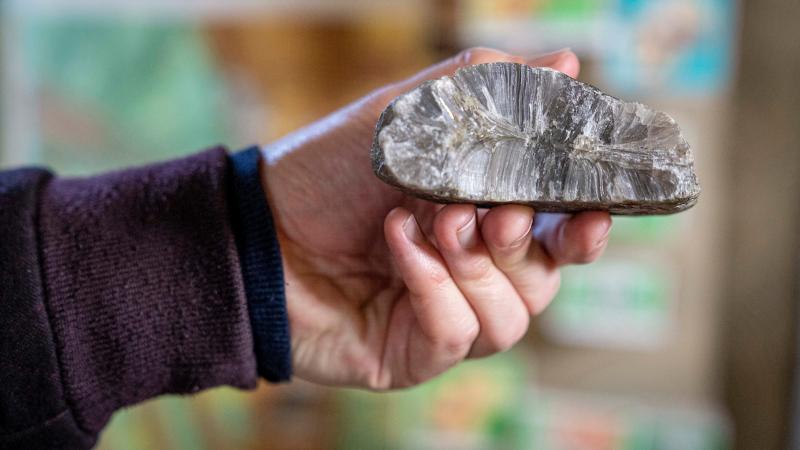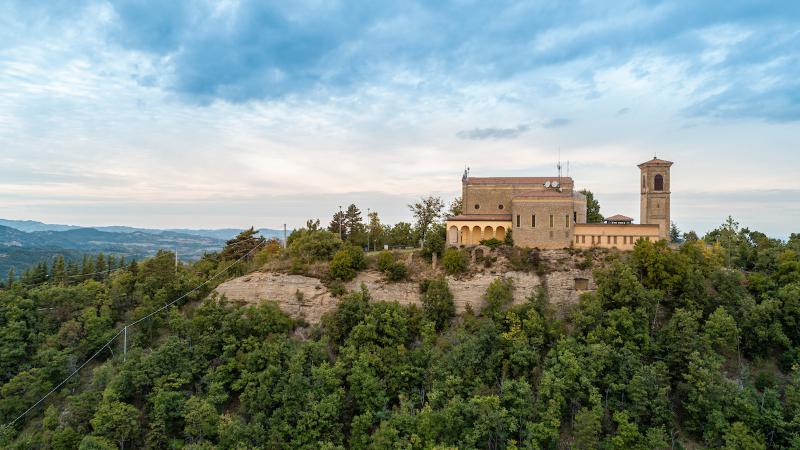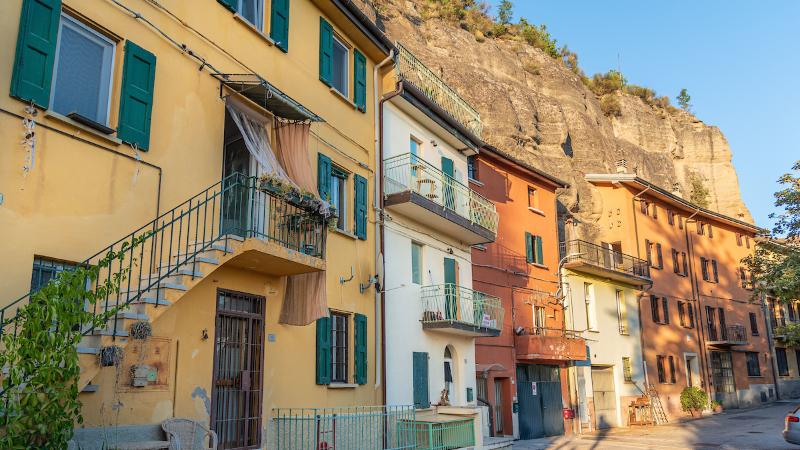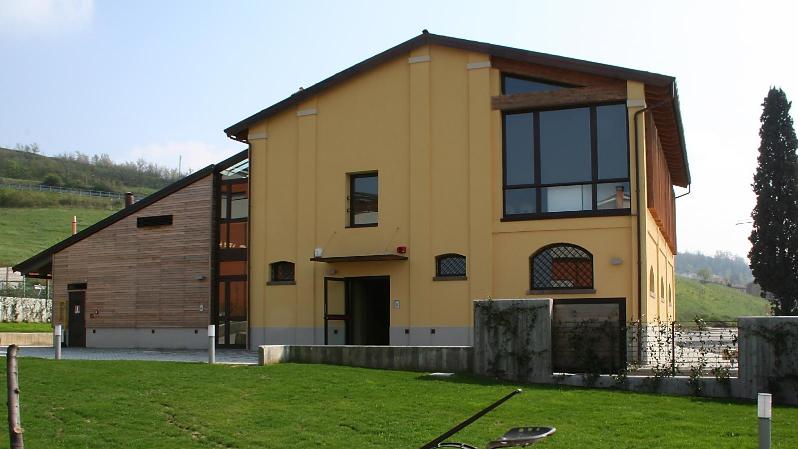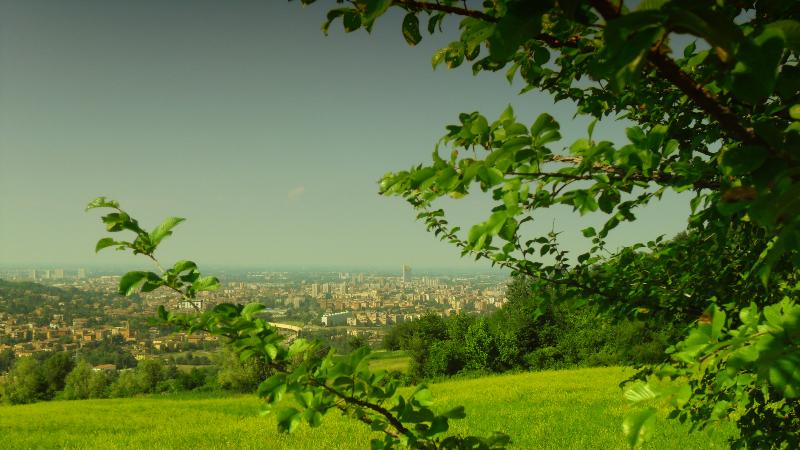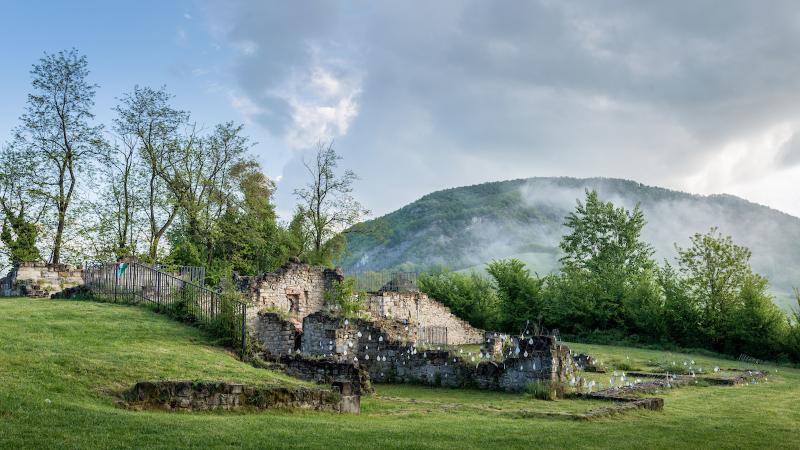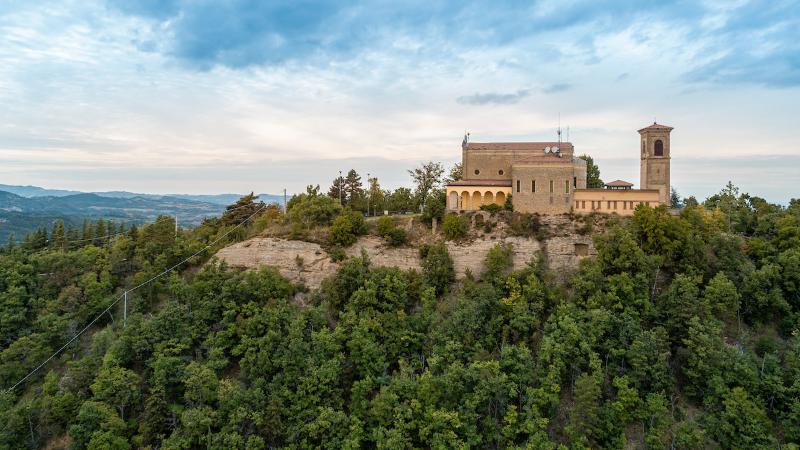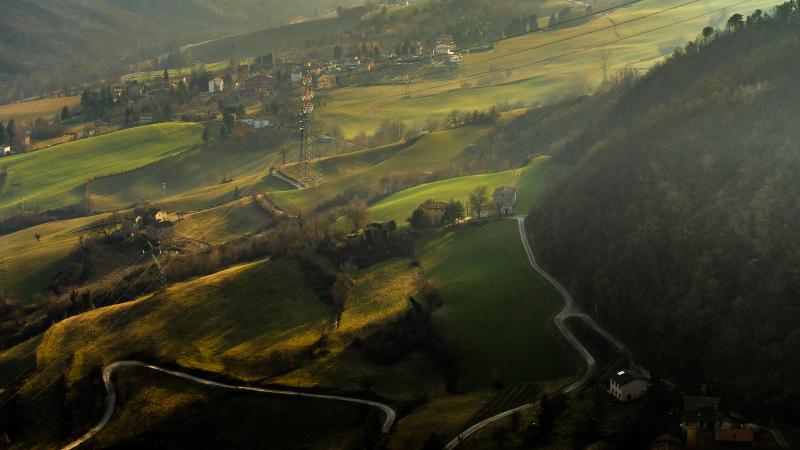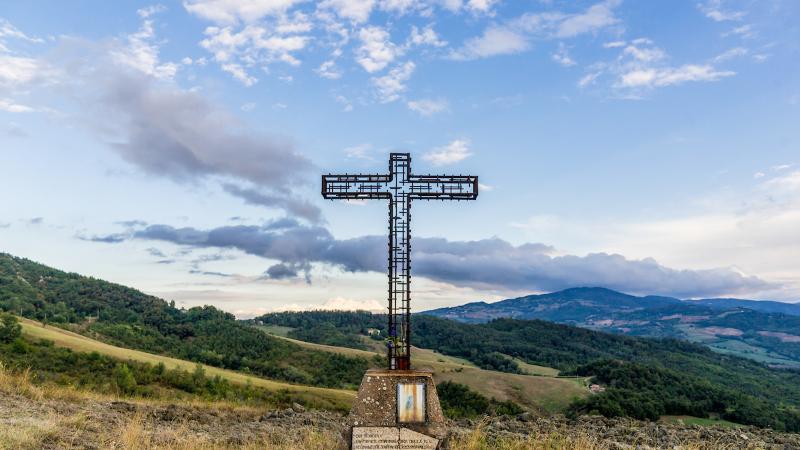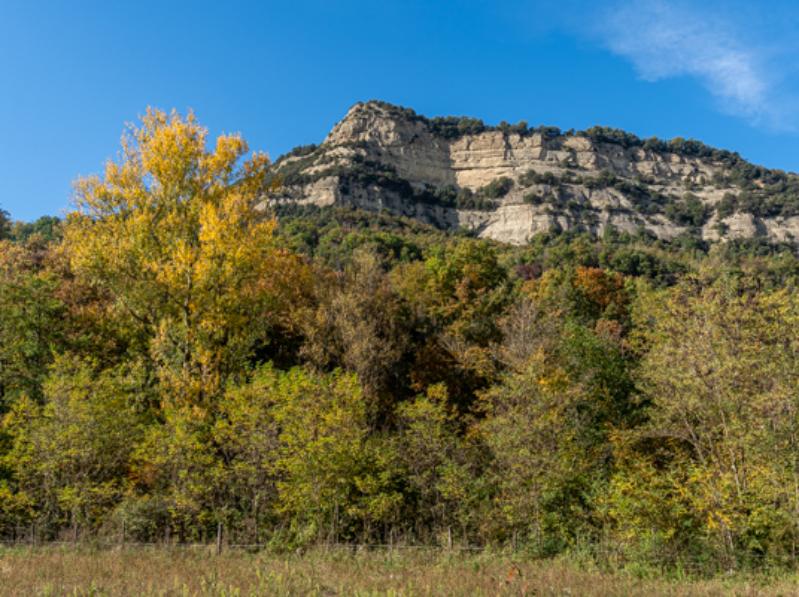
Along the centuries-old Futa road, climbing the southern hills of Bologna, lies the town of Pianoro, an unmissable stop on the way to Florence.
Its surrounding area has a great historical and naturalistic importance, being part of the Parco dei Gessi Bolognesi e Calanchi dell'Abbadessa. The town is divided between Pianoro Nuova and Pianoro Vecchia, which houses a World War II refuge, dug into the rock to a depth of about 100 meters. It was reopened and designated a "place of remembrance" in 2007. The Mater Pacis altar (in Montecalvo, made with plaster from the Park's quarries) is also positioned in a symbolic place in memory of the fallen of all wars.
Not far from the village stands the Monte delle Formiche (litterally Mount of the Ants). This place is known for a curious natural phenomenon that has been occurring for centuries once a year around September: the migration of a variety of winged ants that reach the top of the hill until they get inside the sanctuary of S.Maria di Zena and die there. This natural show is an attraction for entomology enthusiasts and nature lovers.
Further in the direction of Monte delle Formiche lies Zena Castle, which once belonged to the Countess of Canossa. This medieval building features elements of the 14th and 17th centuries and despite its current state of disrepair the ruins still retain the charm of a remote era. Close to the castle stands the Torre dell' Eredi, dating back to the 14th century, which served as a lookout to control the territory.
A visit to the church of San Giacomo Maggiore, which was renovated in the 18th century and joined to a pilgrims' inn, of which there have been records since the 12th century, is recommended. Noteworthy is the altarpiece by the Scuola del Francia inside the church. The church of San Bartolomeo in Musiano is also worth a visit: the original building dates back to before the year 1000, and for centuries served as a monastery for Celestine friars. A unique work of art is preserved here: the hydria from the Wedding at Cana, an alabaster vase that scholars believe dates back to the Augustan era.
In Pianoro Vecchio stands the Lùpari Tower, a fine example of the art of the Maestri comacini, later incorporated into a 15th-century building with a double loggia.
Continuing along the Futa road, the hamlet of Livergnano is known for its houses built into the rock. This was also the site of violent clashes during the final stages of World War II: the village and its surrounding areas were indeed part of the Gothic Line, the combat front where partisans and allied troops faced off against the Nazi army.
Right here in Livergnano, carved out of one of the caves used as an air raid shelter, is the WinterLine Museum, which collects objects and artifacts from the wartime period.
In Tazzola, on the other hand, you will find the unique Museo dei Botroidi. The exceptional exhibit preserves an important collection of the characteristic "botroidi": anthropomorphic sandstone stones collected by Bolognese speleology pioneer Luigi Fantini in the early 1900s along the Zena River. The museum is totally tactile: there are no showcases, and visitors are invited to touch the stones, for a fully immersive geological experience.
Per informazioni
Municipality
Piazza dei Martiri 1, 40065 Pianoro (BO)
Phone +39 051 6529111
Email comune@comune.pianoro.bo.it
Web www.comune.pianoro.bo.it



